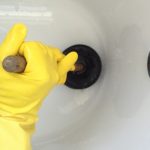BREMERTON — At any given moment, around a dozen atom-splitting nuclear reactors abut the Kitsap Peninsula.
Nuclear energy gives limitless range to aircraft carriers like the Bremerton-based USS Nimitz to traverse the world’s oceans; it also gives the 13 submarines homeported here the ability to perpetually stay under the waves on their own deployments.
But that nuclear power stays at sea.
While it’s unlikely that power will ever come to shore in Kitsap, many of the sailors who operate those reactors go on to jobs in the nuclear industry. And “Navy nukes,” as they’re known, are a valuable commodity as nuclear power is increasingly eyed as a renewable energy source amid a climate crisis.
“We’ve been very happy with the candidates the Navy is continuing to send us,” says Russ Long, operations manager of the Columbia Generating Station, Washington state’s lone nuclear power plant.

Of the plant’s 900 or so workers, 70% are former military, and most of those are retired Navy nukes, Long said. That includes the plant’s CEO and Long himself. It’s a familiar story across the country at the 55 nuclear power plants that operate across 28 states.
Long, who grew up in Tennessee, spent six years in the Navy, including being stationed at Naval Base Kitsap and helping decommission the USS Tunny, a Sturgeon-class fast-attack submarine at the Puget Sound Naval Shipyard.
Some friends told him about the Energy Northwest nuclear power plant, which was recruiting for entry-level equipment operators. He hopped the Cascade Mountains and has been there ever since, rising through the ranks to become the plant’s operations manager. His Navy experience, with know-how of nuclear reactors, was invaluable.
“When I showed up, I thought like a submariner,” he said.

Roots of the nuclear Navy
Navy deployments on nuclear-powered subs and aircraft carriers are routine. But that fact belies just how audacious it was when pioneered under Hyman G. Rickover, the “father of the Nuclear Navy.” Rickover and his team provided the Navy with a new, seemingly limitless power source, first with the launch of the USS Nautilus in 1954. The first nuclear-powered aircraft carrier, the USS Enterprise, followed in 1960 with its own commissioning.
In the time since, the Naval Nuclear Propulsion Program has “safely steamed” more than 166 million miles on board dozens of vessels, overseen by more than 142,000 nuclear propulsion plant operators.
Many, like Larry Sloan, have gone on to jobs at nuclear power plants.
“You just cannot beat the training,” said Sloan, a Navy veteran who has worked at a nuclear power plant in Pennsylvania for 35 years. “There’s just no organization, no university that can provide you the experience the nuclear reactor can.”
The licensed reactor operator was one of the first sailors to serve on the Bangor-based USS Ohio ballistic-missile submarine. When he went to work in the civilian nuclear industry, he found himself surrounded by fellow Navy nukes in his orientation class.
Whoops: why Western Washington is unlikely to host a nuclear power plant anytime soon
As the nation steers toward a clean energy economy, nuclear power has become a flashpoint of the climate crisis. Atomically produced energy to some is a perilous and costly risk that resurrects nightmares from the Fukushima Daiichi Nuclear Power Plant in Japan or the Chernobyl Nuclear Power Plant in Soviet Russia. To others, it is a power savior that produces no greenhouse gas emissions (though they do make some radioactive waste).
But in terms of human health, there’s no comparison. Fossil fuel power plants caused more than one million deaths in a year, according to a scientific study released in 2021 by Nature Communications. Nuclear, by contrast, caused almost no deaths, including to those working in the industry itself. Its workplace is more than a thousand times safer than any other fossil fuel, according to Forbes, using data from the U.S. Department of Labor.

There was a time when Washington’s utilities banded together to go nuclear in a big way: the Washington Legislature created the Washington Public Power Supply System in the late 1950s in an effort to build nuclear plants in Hanford and at Satsop, in Grays Harbor County. Colossal cost overruns and concerns about nuclear power slowly eroded the plan, leading to a $2.25 billion bankruptcy, the largest default in the history of the municipal bond market.
The entity became known colloquially as “WHOOPS.” But the more recently renamed Energy Northwest did complete one power plant: the Columbia Generating Station.
Joel Myer, a longtime Washington energy industry observer who served for decades as spokesman of the Mason County PUD #3 said one benefit that came out of the WHOOPS debacle was the relationship between power utilities and customers grew closer. Utilities had to find ways of conserving power rather than producing more and began educating customers to limit use.
Myer thinks it’s unlikely nuclear power will ever come to Western Washington. But he sees its potential use growing in places where it’s already been established, including in Eastern Washington.
“In other parts of the country, people are used to it,” he said. “They’re also far more dependent on fossil fuels, and are looking to alternatives that don’t produce greenhouse gases.”
More Navy news:Gull poop was piling up at a U.S. submarine homeport. So the Navy unleashed hawks to help
How Navy nukes keep ‘Safe, predictable and reliable” power generating around America
Today, Energy Northwest’s plant 10 miles north of Richland attempts to provide balance in its hiring. A bond with the local community, including Columbia Basin College, ensures a stream of locally grown talent. But there’s no denying the Navy’s ongoing impact on the workforce.

Not every nuclear reactor is the same, and there is a learning curve, even for Navy nukes. The Navy uses what are called pressurized water reactors or PWRs, whereas Energy Northwest’s is a boiling water reactor, or BWR. Within the Eastern Washington land-based power plant, the energy released by splitting uranium atoms heats up water, turning it to directly generate steam that drives a turbine.
The submarines of the Navy, by contrast, have reactors whose pressurized water travels past those splitting atoms, and the subsequent heat generated is transported to a secondary system cycle of lower-pressure water. The result, though, is the same: that heat is used to boil water and turn a steam turbine.
The plant is committed to hiring a mix of experiences, Operations Manager Long noted, but because of their skillset, veterans of the nuclear Navy have an opportunity to emerge as leaders from the get-go.
The reason: “There’s a shock-and-awe period for those who’ve never worked (supporting a nuclear reactor),” Long said. “Our military hires who get to demonstrate leadership by teaching the others who haven’t.
“That’s tremendously valuable to us,” he said.
The nuclear plant can churn out a “safe, predictable and reliable” source of power, Long said. Even more critical is the consistency of the supply. Wind doesn’t always blow to turn windmills and the sun doesn’t always shine to generate solar electricity. Other than hydropower, nuclear is thus far the only consistent power source that doesn’t produce greenhouse gas emissions.
The plant is capable of churning out 1,200 megawatts of power, roughly a tenth of all generation produced in the state. It’s the only nuclear power plant in Washington and one of the few in the American west. And it will continue to provide power in the state for decades to come.
Read more from the Kitsap Sun’s ‘Powering the Peninsula’ series:
Part 2: Will Kitsap County get its own power-generating station? A look at one proposal.
Part 5: Batteries included: Power storage planned to boost electricity grids in Kitsap, elsewhere
Part 6: The Power of the Dam: Hydropower’s place in Washington state’s clean energy economy



![Getting People to Meet Your Comms Deadlines [Video]](https://carpet-cleaning-tallahassee.com/blog/wp-content/uploads/2022/01/bigstock-time-concept-85936037-150x150.jpg)






